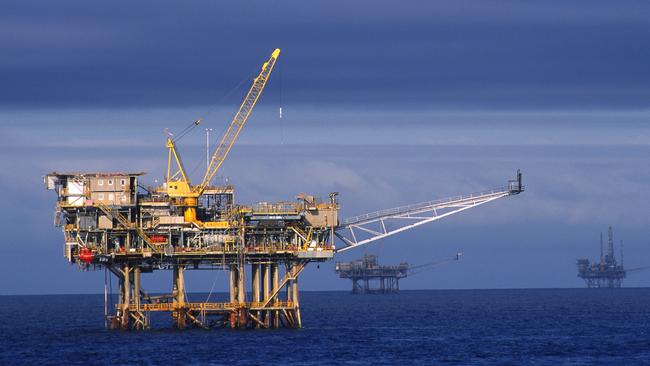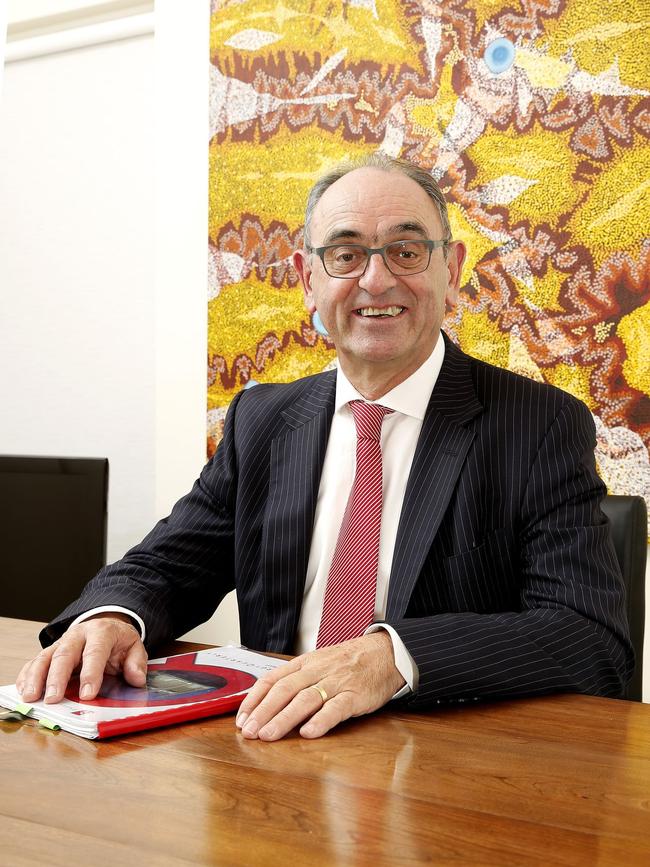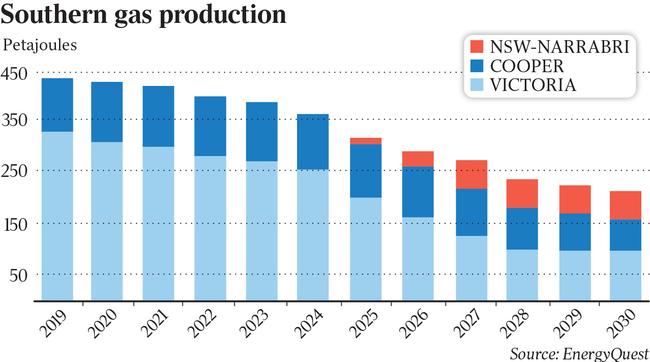Victoria faces gas crunch by 2030 as supply dries up
Victoria faces a hike in gas prices as traditional supply sources dry up, with LNG import terminals seen as essential to head off a shortfall.

Victorian manufacturers face a fresh gas squeeze with prices set to soar by 2030 as the state’s production dries up, with several LNG import plants required to help meet the shortfall.
Gas prices in Melbourne on a spot basis will soar 37 per cent to $11.05 a gigajoule from $8.05 currently, forecasts from consultancy EnergyQuest show, as a widening divide opens up on the nation’s east coast between the supply-poor southern states and self-sufficiency in Queensland and the Northern Territory.
Big industrial users dependent on gas face a crunch, with the projected Melbourne price “significantly higher than the current spot prices and well beyond the capacity to pay for energy-intensive Victorian manufacturing,” EnergyQuest chief executive Graeme Bethune said.
Gas production in Victoria is estimated to plunge 68 per cent to 96 petajoules by 2030, from 305PJ in 2020, as supply from sources including Bass Strait dwindles. Southern states will need at least two LNG import plants to proceed along with the Narrabri coal seam gas project in NSW, which has yet to be sanctioned by owner Santos, and supplies from Queensland LNG producers and the NT to be sent south via pipeline.
Gas prices in Melbourne briefly soared to $58/GJ in July after the twin coal outages at Queensland‘s Callide plant and Victoria’s Yallourn power station.
A further challenge for both buyers and sellers awaits, with the marginal price to be set by LNG imports and Asian gas markets by 2025.
“Gas buyers and sellers are facing an increased degree of price uncertainty and risk. International energy prices are increasingly setting east coast domestic prices, increasing the volatility in domestic gas prices,” Mr Bethune said.
“Already in 2021 the ACCC LNG netback price series has swung between $6.44/GJ and $19.62/GJ. Managing this volatility is a major challenge, whether you are a gas buyer or seller.”

Resources Minister Keith Pitt was asked in July to consider capping gas exports by a major union and a leading industry group, with claims the nation’s manufacturing comeback was “in danger of being jeopardised by high gas prices”.
Australia’s east coast gas market has been crimped in the last few years due to Queensland LNG exports, onshore development restrictions, falling Bass Strait production and the increasing cost of bringing new domestic supplies to market.
Big energy companies are already concerned about a move by the Victorian government to substitute gas for other energy sources as part of its net zero emissions goal by 2050.
Companies that deliver half of Australia’s gas – AusNet Services, Australian Gas Infrastructure Group, APA and Jemena – told The Australian that swapping the fuel out of the state’s supplies would require a threefold increase in electricity network capacity to 30GW from 10GW currently to meet peak winter demand.
Keeping gas in the grid would save $12bn-$14bn annually from 2050 in ongoing electricity maintenance and capital expenditure costs, the companies told the Andrews government in their submissions. The development of renewable gases such as hydrogen and biomethane also offered a path to “fully decarbonise” the Victorian energy grid.

Jemena wants to roll out renewable gas using existing infrastructure as part of a goal to hit net-zero emissions by 2050 in a move to avoid expensive upgrades to the electricity sector.
The Australian Energy Market Operator, which operates the nation’s power grid, warned in March that southern states will only dodge a gas shortfall if billionaire Andrew Forrest proceeds with a project to import LNG at Port Kembla, as production slumps from nearly depleted fields in Bass Strait.
Shortages during winter peak demand periods are not forecast until at least 2026 if Port Kembla meets deadlines, committed gas field developments move ahead and pipeline expansions proceed. AEMO had previously projected a gap would emerge by 2023.
However, any failure or delay in commissioning the project may lead to a 100TJ-a-day gap in Victoria, NSW and South Australia by 2023 during winter under extreme conditions, when average consumer demand is three times more than in summer.
Strong interest in hydrogen may also change the demand profile for the fossil fuel with consumption of gas declining by up to 20 per cent by 2040 on scenario assumptions and an even faster decline in the decade after.





To join the conversation, please log in. Don't have an account? Register
Join the conversation, you are commenting as Logout